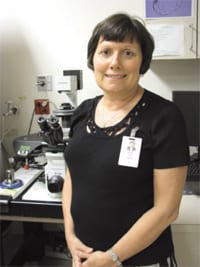A Good Night’s Sleep Chronic Sleep Disturbances May Increase Risk ofNursing-home Placement
Scientists have discovered another possible benefit of a night of restful and uninterrupted sleep.
According to a new study led by researchers at the Johns Hopkins Bloomberg School of Public Health, fragmented or interrupted sleep could predict future placement in a nursing home or assisted-living facility. The study, featured in the July 2012 issue of the Journal of the American Geriatrics Society, outlines the association between objectively measured sleep and subsequent institutionalization among older women.
“Sleep disturbances are common in older people,” said Dr. Adam Spira, lead author of the study and an assistant professor with the Bloomberg School’s Department of Mental Health. “Our results show that, in community-dwelling older women, more fragmented sleep is associated with a greater risk of being placed in a nursing home or in a personal-care home.
“We found that, compared to women with the least fragmented sleep, those who spent the most time awake after first falling asleep had about three times the odds of placement in a nursing home,” he continued. “Individuals with the lowest sleep efficiency—those who spent the smallest proportion of their time in bed actually sleeping — also had about three times the odds of nursing-home placement.”
The authors found similar patterns of associations between disturbed sleep and placement in personal-care homes, such as assisted-living facilities. Sleep duration per se did not predict placement in either of these settings.
According to the Centers for Disease Control and Prevention, insufficient sleep is associated with a number of chronic diseases and conditions, such as diabetes, cardiovascular disease, obesity, and depression. In addition, insufficient sleep is associated with the onset of many diseases and is responsible for motor-vehicle and machinery-related accidents. Previous studies have also linked disturbed sleep with disability in older adults and impairment in activities of daily living and mobility.
Using a prospective cohort study, researchers measured the sleep of women with a mean age of 83 years old. Participants were asked to wear actigraphs on their non-dominant wrists for at least three days. These devices record movement, and the resulting data can be used to characterize patterns of sleep and wakefulness. Demographic information as well as place of residence at initial interview and at five-year follow-up was also provided.
Although several prior studies had investigated the link between sleep disturbance and nursing-home placement, those studies asked participants questions about sleep rather than collecting objective sleep data, said Dr. Kristine Yaffe, senior author of the study and professor of Psychiatry, Neurology, and Epidemiology and Biostatistics at the University of California in San Francisco.
“Despite the growing literature on sleep disturbance and disability, prior to our research, very little was known about the association between sleep disturbance in older adults and risk of placement in long-term care facilities,” she added. “Greater sleep fragmentation is associated with greater risk of placement in a nursing home or personal-care home five years later after accounting for a number of potential confounders.
“It’s important,” Yaffe continued, “to remember that this is an observational study, so our findings cannot demonstrate a conclusive causal link between sleep disturbance and placement in long-term care facilities. We need more research to explain how sleep disturbance might lead to this outcome, and whether interventions to improve sleep might prevent it.”
The report, titled “Objectively Measured Sleep Quality and Nursing Home Placement in Older Women,” was written by Spira, Yaffe, Kenneth Covinsky, George Rebok, Katie Stone, and Susan Redline. The research was supported in part by the National Institute on Aging and the National Institutes of Health.
This article was prepared by the Johns Hopkins Bloomberg School of Public Health.


Comments are closed.